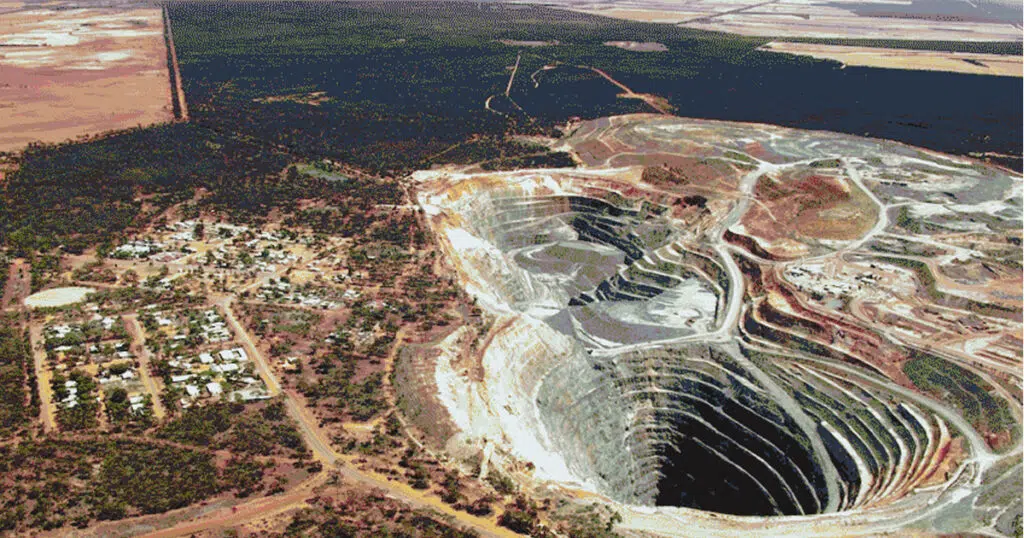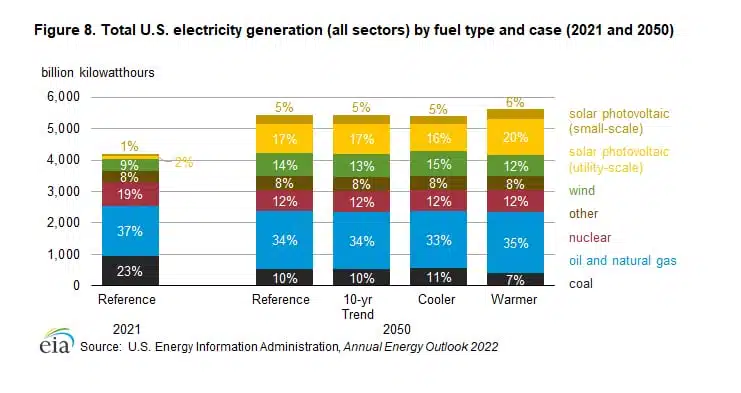
Let’s Compare Lithium And Fracking, Shall We?
“Stop battering mother earth, you neanderthal. We don’t need your stupid oil, we’ve got batteries!”
Right? You’ve heard that.
Green energy vs the evil oil. The unicorn petting zoo vs deathstar on a drunken rampage.
Lately, I’ve been coming across a lot of articles on how mining lithium is going to save us all from the bogeyman of fracking.
Being an un-trusting and under-edumacated deplorable, I decided to stick my nose into this question and compare the two.
A couple of things smacked me in the face as soon as I started looking into it:
What’s faster -Harley Sportser or sour milk?
Comparing damage done to extract oil to lithium mining is like comparing apples to the price sticker on the bin apples might be sold from.
Lithium mining does not produce energy
Seems like a lot of easily gullible “minds” swallowing alt. energy propaganda are dead set on the idea that electricity is free and generated by leprechaun farts (or Conan the Barbarian doing squats in the middle earth; scientists are still not sure).
Real science or basic common sense would help to dispel that idea. So would paying an electric bill.
But I guess if you’re living in your parents’ guestroom, working on a master’s degree in transsexual history of underwater basket weaving you’re not likely to run into either of those in your day-to-day.
Oil, on the other hand, produces energy, materials to make storage for that energy, and energy to power the process to get that done.
Lithium mining produces a single component of the equipment used to store energy.
It takes a lot of additional minerals (nickel, cobalt, and so on, a lot of which is strip mined, nickel in particular by children workers in Africa, so there’s your ethically-sourced material) before lithium will become the battery to hold energy.
By the way, those lithium batteries are designed to last seven years.
Unless you drive in cold weather, drive in hot weather, or hit a pothole.
That same plastic gas tank, serving exactly the same function, will last 70 years. Easy. Longer if the government didn’t mix in that disgusting ethanol.
Electrical energy (stuff you’ll have to fill the battery with to make it something besides a super expensive paper-weight) is most likely going to be produced at a power plant running combustion engines. Engines that run on coal or gas. Our national power supply looks like this (with a fairly comical projection for down the road)…

So to make a fair comparison you have to compare lithium mines, combined with coal or gas mines to oil frack site.
Not just lithium mining.
Truth is anything that’s good for the state
Then we have an issue of a good old bait-and-switch.
The method of lithium extraction, the brine method, we’re told to compare to is not really used much.
It’s just not that effective, takes over a year to complete, and is not up to demand.
Hard rock mining from spodumene ore offers almost ten times the concentration and is a lot easier to transform into lithium hydroxide that’s used in new nickel-heavy NCM 811 cathodes in new electric car batteries.
Australia, the world’s biggest lithium producer switching over to spodumene mining. The world’s biggest lithium mine, Green Brush in Western Australia produced 2 megatons of lithium last year.
Western Australia produced 800 megatons total.
Not exactly the majority.
Why would they hide, it I wonder?
Spodumene extraction is strip mining.
Strip mining, well, you can’t get a cutesy picture of that process. It’s a big , very big, very ugly hole in the ground.
When hipsters imagine the definition of “destroying mother earth” – that’s the image.
Haaaard sell.
” I have nothing against electric cars but let’s not pretend they’re God’s gift to the environment.”
Matt Canavan, Minister for Resources and Northern Australia.
But let’s roll this monkey back and take a look at the gentler, more politically correct brine extraction process and put it side by side with the big, mean, unicorn steak-eating fracking,
In the green corner!!!:
To extract lithium using the brine method:
Drill a hole into a bigger hole, caverns – for some reason called “salars,” where liquid brine (water with minerals from surrounding rocks, including salts, lithium, boron, cobalt, and so on) is suspended.
Pump that brine up and into shallow artificial ponds.
Wait for the sun to do its job and evaporate water to the point where you can collect lithium.
Pretty simple plan.
Takes a long while (anywhere from 8 months to 3 years depending on concentration) and needs the sun to blast its rays a lot.
Good thing most salars are in higher elevations in South America and Australia.
Now, fracking:
Drill a hole in the ground. Vertical, then horizontal.
Preferably in the right place.
Hit oil or gas deposits suspended in the rock.
Stick a pipe in the hole and flow cement around it to fix it in place.
Shoot a jet of high-pressure water mixed with gritty sand, lubricating agents, and antimicrobial chemicals.
That water will fracture the rock and allow oil or gas deposits to flow back up the pipe to be collected.
Then you collect the oil, water, and gas mix.
Heat it up in a big moonshine looking still to separate gas from oil.
The still, by the way, runs on the same gas that just got separated, so no external energy is needed here.
Oil is then separated from water – no external energy is used here either – oil is lighter, and it flows up to the top part of the tanks.
And here is where we get to a, as the last American president says, huuuuge difference.
Water that’s separated from the oil, production water, or salt water as it’s called by oilfield trash (it’s a compliment) is treated as the vilest thing on the face of the earth.
A berm of 3 ft tall to stop it in case of a spill around frack pads.
Any spilled salt water must be vacuumed immediately. Equipment on frack sites is usually parked on top of a huge rubber pad just in case.
It must be transported in a completely sealed saltwater truck to a disposal site, where it’s filtered off all impurities and pumped back into the ground.
Kryptonite.
Evil.
Why?
Well, it’s water that’s been in contact with various minerals deep under the ground, now containing dissolved salts, minerals, and so on.
(hold on to this sentence for a second)
Ok, now lithium.
Water combined with antimicrobial and lubricating chemicals (without that the pipe drilled into the salar would be unusable within a year) from a lithium salar is pumped out to the surface and then run through open channels to a set of open, shallow ponds where it’s free to spill, evaporate and soak into the ground.
A couple of months later it’s moved again to another pool through open channels to assist evaporation. Repeat every couple of months for the next 12 to 36.
” The solution in the lithium evaporation pools is so safe, the evaporation fields are flooded yearly by a nearby river and rebuilt right after” boasts a white paper released to Chilean prospective investors.
Why is it so safe, you ask?
Well, it’s water that’s been in contact with various minerals deep under the ground, and now contains dissolved salts, minerals, and so on.
Totally unlike
Fracking production water that’s been in contact with various minerals deep under the ground, and now contains dissolved salts, minerals, and so on.
(Fracking, paging, Fracking. Clean up on aisle 7)
As the wise man said, “Exqueeze me?”
Just instead of a few days as in the case with fracking, it’s been soaking those same minerals for the last few million years.
Probably a bit more concentrated.
And by “probably” I mean “definitely.”
But just in case you’re still not mouthing out “WTF” – the lithium extraction industry is very interested in buying up fracking salt water to extract lithium from it.
They can’t.
EPA says it’s too poisonous to have any contact with and must be disposed of.
Oh, it gets even more fun.
Remember the “ fracking is making huge holes in the ground, we’re all gonna fall into them when they cave in! Help! “ and ” fracking is too close to groundwater levels, so the salt water and minerals in it will poison us all! Help!”
Well, fracking is drilled down between 6000 and 10000 feet- water aquifers average around 500 feet. We’ve been fracking since 1949, with over 2 million frack treatments and not one proven case of water contamination.
Holes in the ground? Fracking doesn’t bring up the rock that oil and gas used to reside in, they’re still there. Broken rock, solid rock…same amount of rock. The same space is taken up.
Now, lithium, well, you are pumping the lithium-laden salt water out of a big hole in the ground.
That leaves, well, a big empty hole in the ground. If you want to worry about cave-ins-there you go.
And guess how deep those salars , filled salt water deposits full of lithium, cobalt, magnesium, and other assorted yummy goodness that makes them untouchable in the oilfield are?
Well, America’s Lithium project in Nevada is drilled to a salar at 370 feet. Right about the same depth as water qualifiers.



